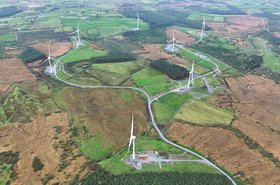The Planning and Infrastructure Bill, recently introduced to the UK Parliament, has the potential to change where the national grid upgrades and connections can happen, opening up parts of the country to data center developments that were previously unviable.
With this, there is a risk that communities will be left out. There is a yawning gap between what communities will increasingly want from data centers and what they currently deliver. We spoke to key players in the industry and sociology experts to shed light on the often-misunderstood role of data centers in modern society.
We found that data centers are often done to local communities, not by local communities, and when data centers are pitted against limited community resources – whether it’s power or land – everyone loses out. We decided to turn the tables and ask what a community-first data center might look like. Can we shift the narrative surrounding them from one of skepticism to one of appreciation?
Data centers have been viewed negatively, often perceived as demanding excessive resources such as energy, whilst giving nothing to local communities in return. Large swathes of the general public also find the purpose of data centers difficult to understand, since there is a disconnect between the data their daily lives create, and how it is stored in a physical environment.
This perception stems from a growing backlash against data centers, pitting them against communities, and lack of community engagement, with no opportunities for local communities and local planning authorities to develop an understanding of the potential benefits these centers can bring. Social engagement has the potential to address this imbalance and foster a clearer understanding of how data centers can contribute positively to local communities.
But there is no universally agreed blueprint or roadmap on what a socially conscious data center looks like. This is where our concept of “Data Centre Society” comes in to try and fill in the gaps. In our report, we’ve created a ladder of social, economic, and regional development benefits and needs to reimagine society and communities at the heart of the data center industry.
By taking a step onto this ladder, data center developers will start to draw in co-beneficiaries, aggregating more benefits for more people the further up the ladder they progress. This can start with something as simple as job creation and local-first supply chains, and progress up to becoming economic facilitators for green energy, heat sharing, and digital infrastructure. With these types of benefits unlocked, we should be in a position where communities want to attract data centers and vie for their investment. After all, they are the engines of the digital economy, as well as the fourth and fifth industrial revolutions.
Data center developments have the potential to be beacons for social and economic gains if fully realized. It is not just about data centers being good neighbors, but wholeheartedly embracing communities. The sector can be creative about clustering or agglomeration, where there are multiple benefits for local communities from the development of data centers. If we put communities at the heart of data center developments, we start to get co-benefits because we start new conversations with utilities, for example, on power sharing, or businesses on data center usage.
Many communities in post-industrial decline or in dire need of economic and societal renewal could make the most of new data-center infrastructure.
This is where location matters. Data centers and society can also benefit from industries that need low-latency, whether it be e-sports, financial services, or with less latency-dependent needs for running AI models for healthcare providers or pharmaceutical companies. Future-proofing data center infrastructure and what it offers to the wider community is also important since the technology inside data centers is evolving rapidly. Longevity is an issue.
There needs to be a concerted effort to engage communities in discussions about the true value of these facilities because their current societal and economic value is not currently being fully realized by communities, planning authorities, or politicians.
By fostering a better understanding of their benefits, we can pave the way for a more positive relationship between data centers and the communities they serve. As we navigate an increasingly digital world, it is imperative that we recognize and harness the potential of data centers as vital contributors to our society.
Read the orginal article: https://www.datacenterdynamics.com/en/opinions/the-untapped-social-value-of-data-centers/





